San Diego Region Expects Sizzling Summer Heat
Water Authority offers tips to keep things cool while using water resources efficiently
The first major heat wave of summer 2018 in the San Diego region arrived Friday, and it is expected to continue through the weekend. Temperatures hit a record 111 degrees in communities including El Cajon, Escondido, and Ramona on Friday. The City of San Diego reached 93 degrees. There won’t be much relief on the beaches, as Coronado’s forecasted high on Saturday is 83 degrees.
Heat records set in San Diego and around the world
Red-hot temperatures are a worldwide trend, including in the San Diego region. The National Weather Service reports 53 of the last 56 months have been hotter than normal at the official weather station at Lindbergh Field.
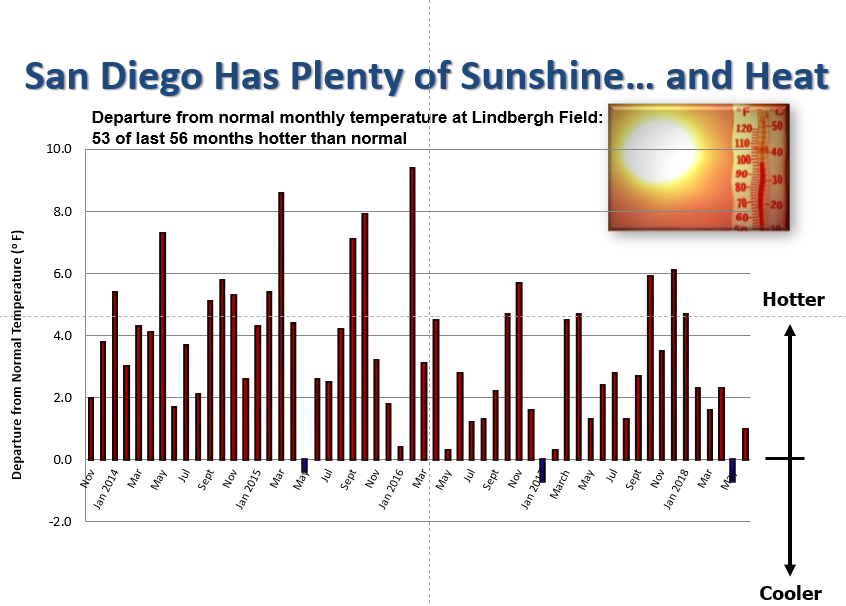
San Diego’s temperatures show an upward trend overall.
All time heat records have already been set this week from Denver to Tbilisi, Georgia. Record heat is to blame for at least 33 deaths in and around Montreal, Quebec.
Whether or not the San Diego region will break its record high temperatures of 2017 this year, it is important for residents to use WaterSmart practices which help you use water resources efficiently during the peak water-use months.
The San Diego County Water Authority offers several tips for making the most of the region’s water supplies. They include:
-
Check your landscaping’s irrigation system
Inspect irrigation equipment to eliminate overspray. Monitor soil moisture using a spade or soil probe, and only water if the top inch of soil is dry. Irrigate turf if it doesn’t spring back when stepped on. Better yet, upgrade to a “smart” irrigation controller that automatically adjusts water times based on weather conditions. Rebates on irrigation equipment are at WaterSmartSD.org.
-
Water your mature trees correctly
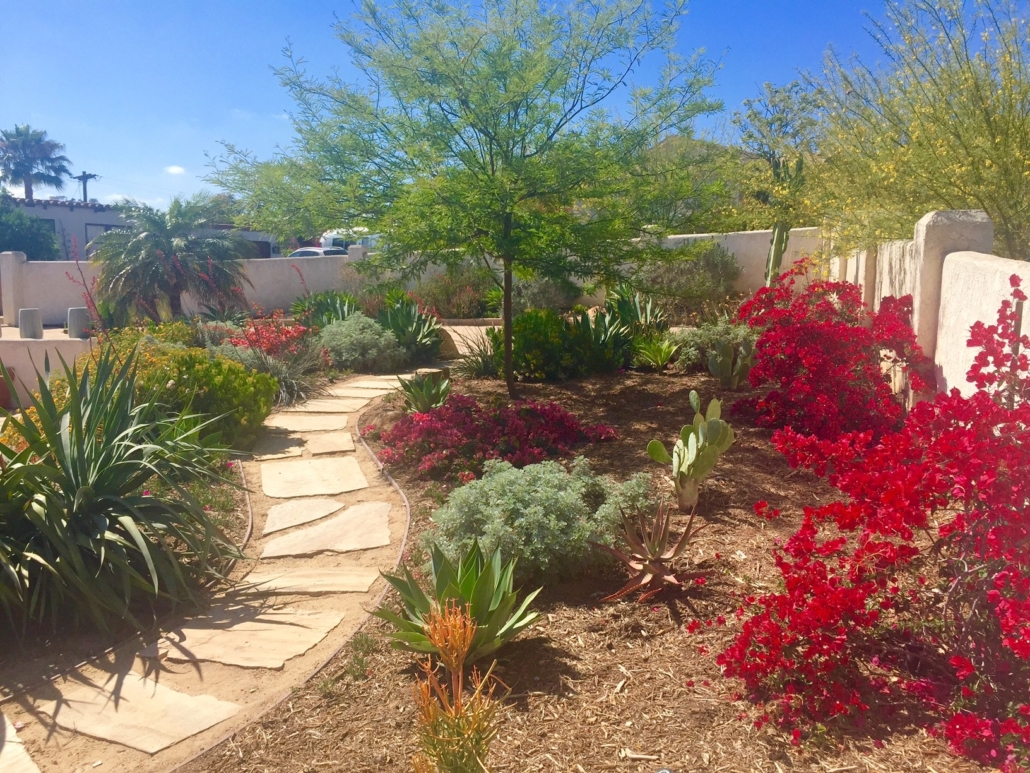
Water mature trees like this mesquite tree slowly and deep into its roots. Photo: Water Authority
Irrigate mature trees once or twice a month using a soaker hose or drip system toward the edge of the tree canopy – not at the base of the tree. Use a hose faucet timer (found at hardware stores) to prevent overwatering. Young trees need more frequent irrigation; consult an arborist or tree-care manual for details.
-
Refresh your compost and mulch
Keeping a 3-inch layer of mulch around trees and plants reduces runoff, helps control weeds and protects soil from direct sunlight and evaporation. Keep mulch at least a foot away from tree trunks and several inches from the crowns of plants. Also, add compost to increase soil nutrients.
-
Refrigerate drinking water
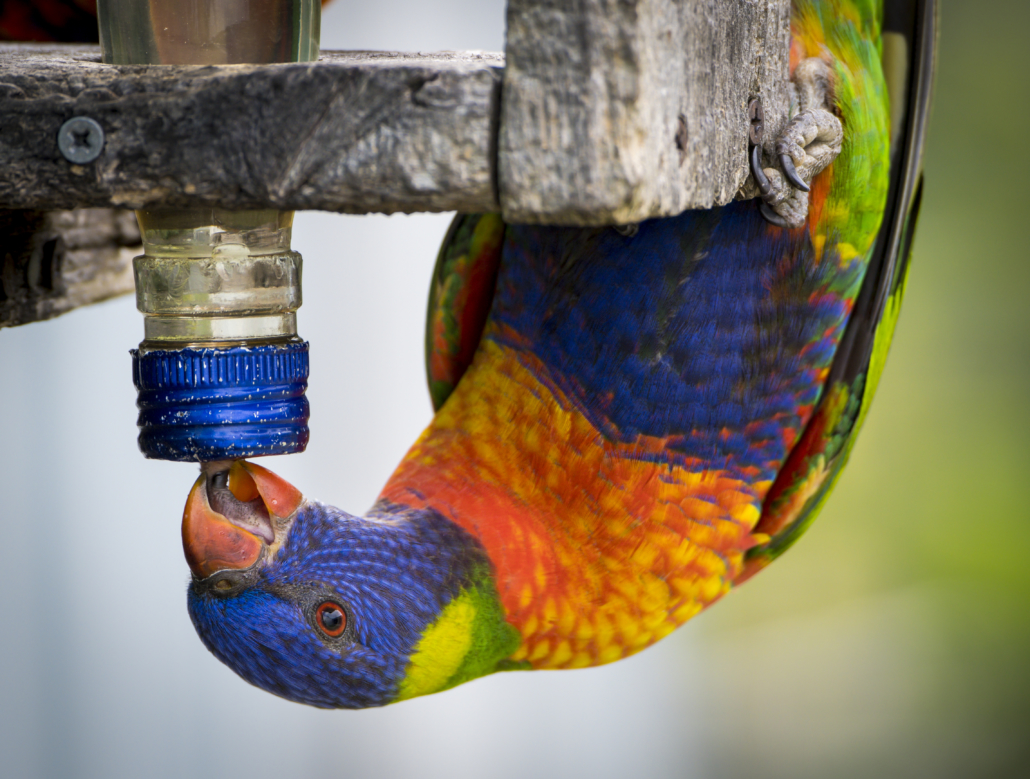
Your lorikeet can get its drinking water this way. You should fill your reusable water bottles and chill them in the refrigerator for your cold drinking water. Photo Wade Tregaskis – Creative Commons License
Keep drinking water cool in your refrigerator to avoid running the tap. Use refillable water bottles instead of buying disposable plastic bottles.
-
Put a lid on it
Pool and spa covers reduce evaporation, lower pool heating costs and keeping out dirt and debris.
-
Take a gardening break from the heat
New plants need more water to get established, so wait until fall or winter for planting to take advantage of cooler temperatures and rainfall.
-
Watch the grass grow
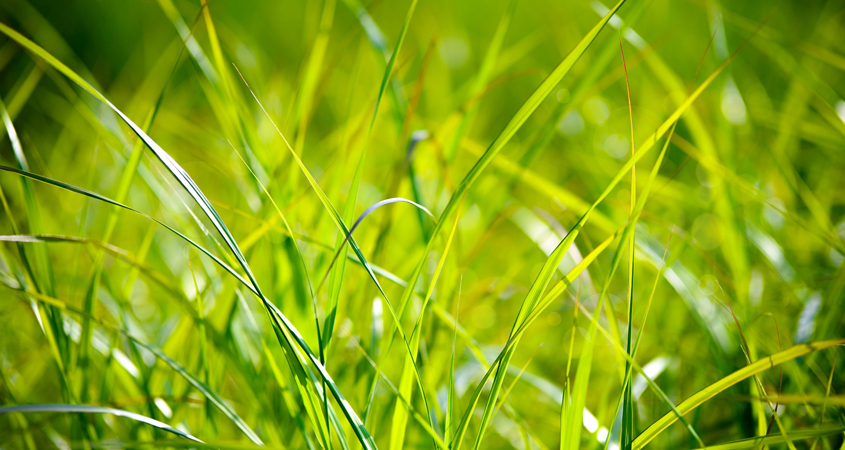
Let your grass grow longer in the summer. Photo: PhotoMix – Creative Commons License
Set your mower to leave grass at least three inches high, because taller blades of grass can reduce evaporation up to 80 percent and protect your roots from heat. And don’t water during the hottest part of the day. The ground can be so hot, roots may literally cook themselves in hot irrigation water.
-
Treat your vehicles to an efficient car wash
Patronize car washes that recycle water and save at least 15 gallons each time. When washing at home, use a hose nozzle that shuts off when you release the handle.
-
Rinse your produce the right way
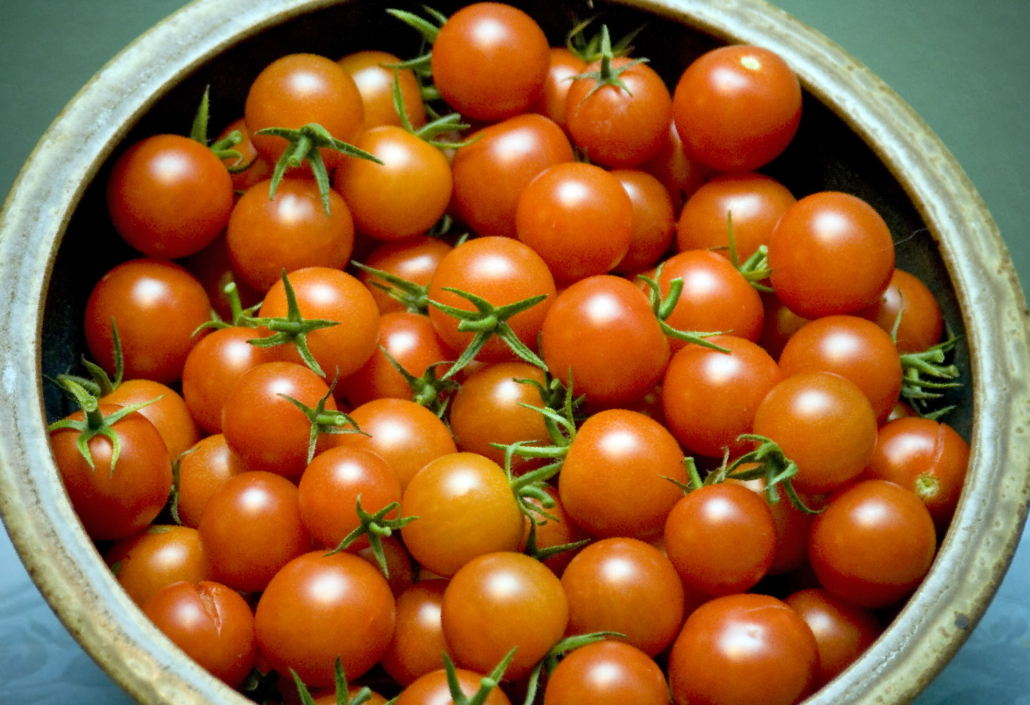
Rinse your fresh fruits and vegetables in a bowl, then use the water on your indoor plants. Photo: McBeth, Creative Commons License
Wash fruits and vegetables in a bowl of water instead of under a running water tap. Use the bowl of water afterward to water your house plants or outdoor container plants.
-
Go to summer school
Learn more tips and best practices on how residents and businesses can use water most efficiently, including WaterSmart Landscaping Videos on Demand from the comfort of your beach chair or sofa, plus information on rebates, classes and other water-saving resources to help you keep your cool on your water use this summer at WaterSmartSD.org



